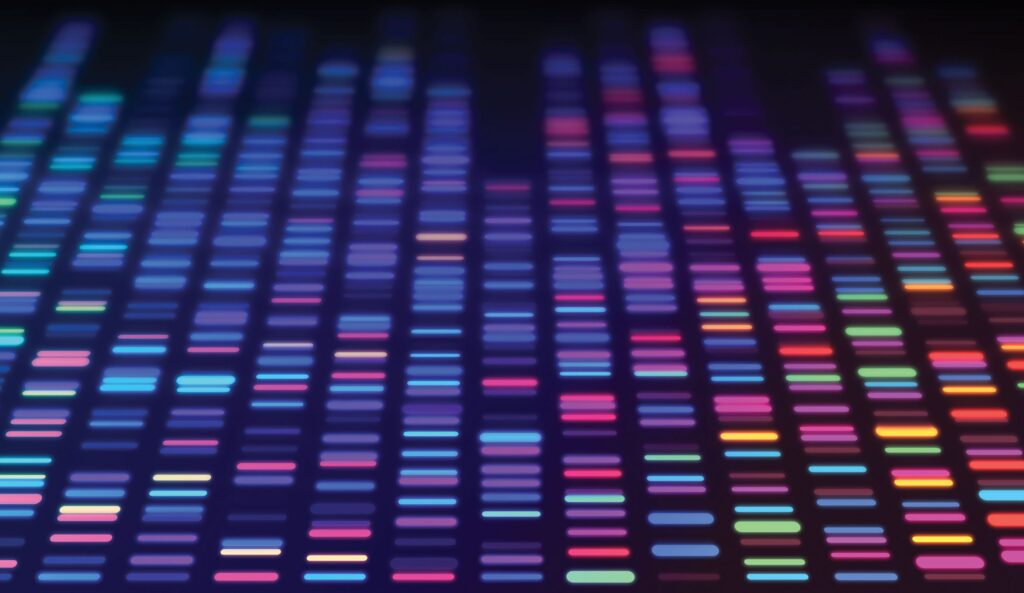
Human DNA is a fascinating science to explore. Each human has a specific code within their DNA that comes directly from their mother, called maternal DNA or mtDNA – think of it as your specific genetic branch of the human family tree.
According to genetic researchers — each human has 23 pairs of chromosomes within your DNA. These pairs shuffle about each time a new human DNA is created – however mtDNA is not shuffled. It is retained as an exact copy of the maternal DNA in every single person in your direct maternal line. Everyone in your lineage: your mother, brother, sister, aunt, grandmother – will all share the same mtDNA. Quite poetically, we all carry pieces of our mothers inside the very first bit of creation that exists in our bodies.
Science groups people together with identical mtDNA into something called haplogroups. A haplogroup is a genetic population group who share genetic ancestry all the way back to where it began. At the very essence of human cellular makeup – we are all matrilineal.
It’s a beautiful part of scientific discovery that perfectly compliments the Haudenosaunee historical practise of following the lineage of our mothers in assigning clans and nationhood.
The interesting difference between the two however, is that our Haudenosaunee social history is a story of adoption. Traditionally, if a woman was welcomed into Haudenosaunee society and bore children to a Haudenosaunee male, their children would be adopted and fused into the clan and nationhood of their father.
In contrast – a person’s mtDNA is non-transferrable.
So while we may claim Haudenosaunee clan membership and nationhood, often a person’s mtDNA will tell a different story.
Take for example a man who was born and raised to two Mohawk people from a Mohawk reserve. His parents are Mohawk, his grandparents were Mohawk, but a singular great-grandmother was Scottish. That Mohawk family, three generations down, now carries the mtDNA of that singular Scottish nan.
It only takes one female ancestor of variance to alter your haplogroup. Does that make the Mohawk family in this example less Haudenosaunee?
On the flip side – what would make someone more Haudenosaunee?
If a woman bears the pure mtDNA of Haudenosaunee lineage – and then marries a Jamaican man, bears Jamaican children, who bear Jamaican grandchildren – are they now more Haudenosaunee because of their mtDNA? In contrast – would they be accepted as undisputed members of clan families and granted nationhood because of the lone Haudenosaunee female ancestor?
It’s an interesting thing to think about. At the core of who we are — genetics — women matter so much. But in the social constructs of who we are as communities and nations and clans – the definitions of which woman’s nationhood counts flips and flops depending on who you ask. Are you really a Cayuga or a Delaware in disguise? And who gets the say on who belongs and who doesn’t?
Is it adoption, maternal lineage, or social preference that gets you a spot on the clan list? If you look to social media to determine who counts as a Haudenosaunee woman they might even give you a totally different requirement. The waters are muddy and the variance is vast.
As we move into International Women’s Day – it is important to examine our own communities and look at how we can smash internal stereotypes on what is required to define someone as a Haudenosaunee woman. What are the standards we place on Haudenosaunee women who bring forth the faces yet to come? What kind of messaging are we as a community giving to them about inclusion, or rather, exclusion when it comes to finding a partner to have children with if they want to retain Haudenosaunee nationhood and clan belonging? And is that messaging good for people’s well-being overall?
What kind of work are we doing as a community to embrace diverse women? Those who are not born biologically female but emerge as women throughout the course of their lives and self-discovery. Is there a place for them in the Haudenosaunee world today? Do we put out messaging in our community that reinforces cis-gendered ideals and diminishes gender diversity? Does that kind of downplaying or exclusion affect members of our community who are gender diverse? How can we be more conscious as a community in our organizations, departments, businesses and social spaces to make it safe for women of all gender expressions and sexual orientations. And how can we hold space to value the children of women of diverse gender expressions and sexual orientations? They are all Haudenosaunee.
These are important decolonization questions for Six Nations and the surrounding region to consider in looking at how to move forward as inclusive and diverse communities – celebrating indigenous women and keeping them safe.
If you have stories about how your family, organization or group are working to create inclusive spaces for Haudenosaunee women we’d like to hear from you. Drop us a line: editor@tworowtimes.com.







This is great knowledge- thank for passing it on!